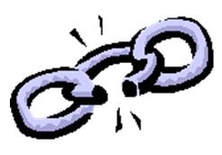 By now we know that the HPAM Value Chain consists of primary and secondary functions, critical to realize value from physical assets over their entire lifecycle. Organizations need to be aware that it is not just the functions that have to be considered in the HPAM Value Chain, but also the linkages between those functions. The linkages are key elements in the chain that contribute to realize value. Each link can be broken down into processes/sub processes so as to identify and map the value producing activities. In many organizations there are several factors that can heavily impact those activities, and hence limit the realization of maximum value. Each link of the value chain are sources of constraints. The biggest challenge faced by organizations is to identify those constraints and find ways to deal with them. Different approaches such as continuous improvement efforts, lean thinking, six sigma methodology, etc. are used with varying degrees of success. You may have heard of TOC - Theory of Constraints, an overall management philosophy introduced by Eliyahu M. Goldratt in his 1984 book titled The Goal that is geared to help organizations continually achieve their goals. The theory of constraints (TOC) is a management paradigm that views any manageable system as being limited in achieving more of its goals by a very small number of constraints. There is always at least one constraint, and TOC uses a focusing process to identify the constraint and restructure the rest of the organization around it. TOC adopts the common idiom "a chain is no stronger than its weakest link." This means that processes, organizations, etc., are vulnerable because the weakest person, part or functional area can always damage or break them or at least adversely affect the outcome. TOC consists of Five Focusing Steps:
At the end there will always be a constraint in the system, so organizations need to choose wisely which one to act on first. Eventually the constraint should be stabilized. One caveat is that the process should not endorse frequently shifting constraints. This can create chaos and confusion on policies, procedures and people. TOC is applied widely in many industries and processes, such as manufacturing, project management, service industry and even personal life. So why not apply the same TOC concept to the HPAM Value Chain in your organization? What are the weakest links in your HPAM Value Chain? What are the constraints to the value realization process? Are they – awareness of asset management, organizational culture, shortage of skill sets, lack of resources, funding limitation, poor lifecycle management activities, inadequate governance & leadership, etc.? The more you drill down in the HPAM Value Chain of your organization the more constraints can be uncovered within the different functions, the linkages between them and further down. For example in my book Physical Asset Management - An Organizational Challenge, I identified one fundamental constraint causing bottleneck in the implementation process of holistic asset management - functional silos. Can you recognize the functional silo(s) in your organization?
11 Comments
|
FollowAuthorDharmen Dhaliah, P.Eng, MBA, PMP, CAMA, MMP, CMRP Archives
October 2021
Categories |

 RSS Feed
RSS Feed